The Ultimate Guide to Buying Birthstones: Key Insights
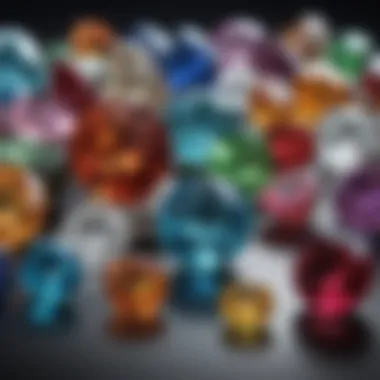
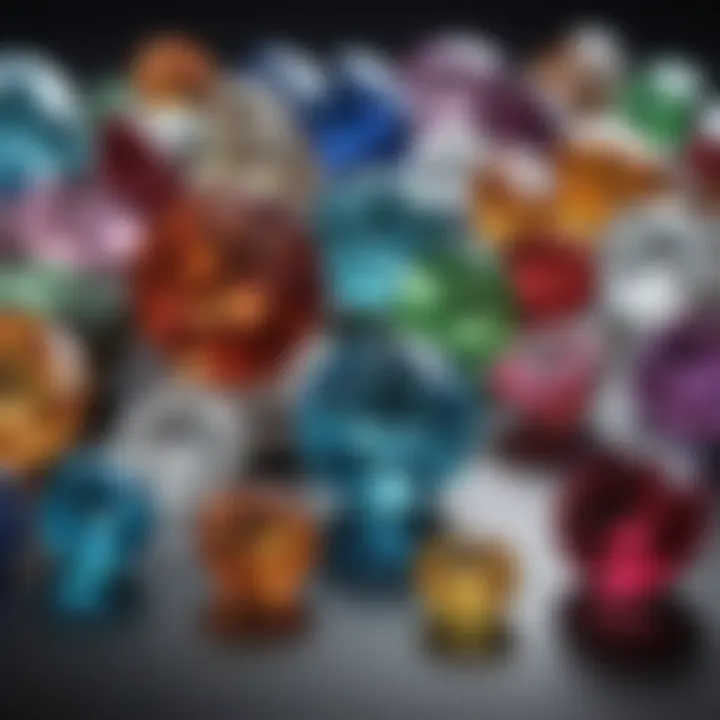
Intro
Embarking on the journey of purchasing birthstones is more than just a decision about jewelry—it's a connection to one’s identity and heritage. Each gemstone carries a unique story, a historical context that enriches its appeal. From the ancient beliefs that dictated the powers of specific stones to today’s ethical considerations in sourcing, the act of selecting a birthstone engages a web of meanings and choices.
Birthstones are not only significant due to their aesthetic qualities but also their cultural implications. For instance, a sapphire, often associated with wisdom and royalty, can be more than just a beautiful blue gem; it symbolizes loyalty and nobility. Furthermore, birthstones act as a way to commemorate personal milestones, making them perfect for gifts that last a lifetime. This guide aims to navigate through this intricate world, spotting key areas of interest and practical tips to assist consumers.
Gemstone Overview
To truly appreciate the significance of birthstones, it’s essential to first understand what gemstones are in general. Gemstones are generally classified as natural minerals that have been cut, polished, and shaped for adornment and decoration. They come in a myriad of colors and qualities, each with its defining characteristics.
Definition and characteristics
A gemstone can be defined simply as a precious or semi-precious stone that has undergone a transformation from its natural state to become a piece of valuable art. What distinguishes a gem from other minerals is primarily its beauty, durability, and rarity. For instance, diamonds are highly valued for their clarity and ability to refract light brilliantly, while emeralds are celebrated for their lush green hues. Moreover, the most renowned gemstones, such as rubies, sapphires, and opals, not only dazzle the eye but also carry historical weight in various cultures.
Classification of gemstones
Generally, gemstones can be categorized into three main classes:
- Precious Gemstones: This group includes diamonds, rubies, sapphires, and emeralds. These stones have long been revered for their rarity and durability.
- Semi-Precious Gemstones: Examples include amethyst, garnet, and aquamarine. While not as rare as precious stones, semi-precious gems can still be stunning and hold significant value.
- Organic Gemstones: This classification includes pearls, coral, and amber. These are formed through biological processes rather than geological ones.
Properties of Gemstones
Understanding the properties of gemstones can further enhance one’s ability to choose wisely when purchasing. Each stone possesses unique qualities that can be significant in making an informed decision.
Physical properties
The physical properties of gemstones include aspects like hardness, color, and luster. Hardness, measured by the Mohs scale, indicates the stone's ability to resist scratches. For instance, diamonds score the highest at a 10, making them incredibly durable. Color ranges vastly, often influencing popularity and cost; deep blue sapphires tend to be more expensive than lighter variants. Meanwhile, luster relates to how light reflects off the gemstone’s surface, with options from vitreous to dull finishes.
Chemical properties
Chemically, gemstones are defined by their composition. For example, a ruby is chemically identical to a sapphire, as both are varieties of corundum, with the ruby being red due to chromium content. Understanding the chemical make-up can assist in evaluating quality and authenticity, especially in a market where synthetic stones are increasingly prevalent.
Prolusion to Birthstones
Birthstones hold a unique charm in the world of jewelry, transcending mere aesthetics to embody deeper significance rooted in culture, tradition, and personal connection. Understanding the intricacies of birthstones is essential for enthusiasts and collectors, as these gemstones are not just pretty baubles. They often resonate with personal stories, societal beliefs, and astrological associations that make each selection profoundly meaningful.
Definition and Origins
A birthstone is a gemstone that is traditionally associated with each month of the year. The practice of assigning specific stones to each month can be traced back to ancient civilizations, including the Greeks and Romans. They believed that wearing a gemstone corresponding to one’s birth month could invoke the stone’s protective and metaphysical properties. For example, the month of April is celebrated for its dazzling diamond, a symbol of strength and clarity. The origins can also be linked to the twelve stones mentioned in the Book of Exodus, worn by Aaron as a representation of the twelve tribes of Israel.
Cultural Significance of Birthstones
Across the globe, birthstones carry distinct cultural significance and meanings. In many cultures, these stones are thought to bring good fortune, health, and protection. In India, for instance, birthstones are ranked by their astrological power, leading to specific choices for talismans. In contrast, Western cultures often view birthstones as personal items for gifting and self-expression. Each gem can tell a story, be it a ruby representing passion for July babes or an amethyst for those born in February, symbolizing calmness and protection. The cultural narratives attached to these gems play a crucial role in how individuals connect with them on a personal level.
Astrological Connections
Delving deeper, the astrological ties to birthstones intertwine beautifully with their personal significance. Birthstones are not just pretty rocks but are believed to resonate with the energies of celestial bodies. For example, the lush green of emeralds, linked to the planet Venus, is associated with love and rebirth, making it popular among those seeking harmony in their relationships. Such connections add layers of meaning, suggesting that one might find comfort or empowerment through wearing their corresponding birthstone. This incorporation of astrology undoubtedly enhances the link between individuals and their chosen stones, presenting an engaging way to personalize these dazzling gems.
"From cosmic connections to personal journeys, understanding birthstones elevates the search for the perfect gem beyond a simple transaction to a meaningful experience."
Types of Birthstones
Understanding the types of birthstones is essential for anyone diving into the world of gemstones. Birthstones not only hold personal significance but also connect deeply to one's cultural heritage and historical context. In this section, we'll explore various aspects of birthstones, focusing on their categorization by month, cultural variations, and the distinction between modern and traditional choices. Each element plays a vital role in how individuals select, appreciate, and cherish these gemstones.
Monthly Birthstones Overview
Each month of the year is associated with a specific gemstone, known as a monthly birthstone. These stones often reflect characteristics tied to the month, presenting unique symbolism and meanings. For example, January is represented by garnet, which signifies protection. Likewise, September features sapphire, a stone commonly linked to wisdom and nobility.
The allure of monthly birthstones lies in their accessibility and the tradition behind them. People often choose their birthstone as a symbol of their identity or as a personal talisman. They represent not just a slice of earth’s beauty but also a piece of personal heritage. Here’s a list of the monthly birthstones:
- January: Garnet
- February: Amethyst
- March: Aquamarine
- April: Diamond
- May: Emerald
- June: Alexandrite
- July: Ruby
- August: Peridot
- September: Sapphire
- October: Opal
- November: Topaz
- December: Turquoise
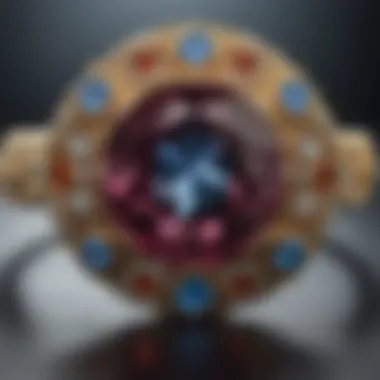
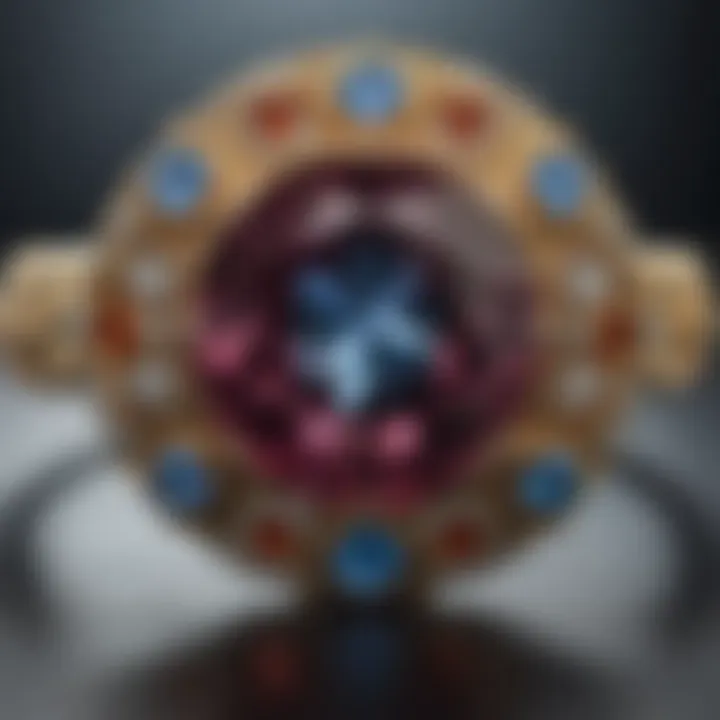
In essence, choosing a monthly birthstone is about resonance. Does the stone speak to you, reflecting your birth month or personality?
Variations in Birthstones Across Cultures
While birthstones are often tightly bound to the Western calendar, various cultures give these gems different meanings and associations. For instance, in Indian culture, the system differs significantly, where each gem relates to astrological signs rather than months. The idea of gemstones being connected to astrological influences amplifies their spiritual significance.
For example, in India, the ruby is associated with the sun, believed to bring success and longevity. In contrast, Western traditions might view the same stone purely as a July birthday stone. This divergence emphasizes personal belief systems and the cultural narrative that shapes how gemstones are valued and adorned.
Modern vs. Traditional Birthstones
The debate surrounding modern versus traditional birthstones can lead to heated discussions amongst gemstone enthusiasts. Traditional birthstones are those listed in the Jewelry Industry Council’s guidelines established in 1912, which have remained consistent over the years. In contrast, modern interpretations have emerged, introducing additional stones that sometimes align with contemporary themes or trends.
For instance, Alexandrite is recognized as the modern birthstone for June, considered a vibrant and multifaceted gem. However, traditional lists point to pearl or moonstone as the enduring options for the same month. Therefore, selecting between these can often reflect personal values or familial connections to the past.
In summary:
- Traditional Birthstones: Long-standing gems associated with historical significance.
- Modern Birthstones: Updated options reflecting current styles and sentiments.
Ultimately, understanding the differences can enrich one’s appreciation for the gemstones, whether one leans towards heritage or the allure of the new. Each choice speaks volumes about the wearer’s identity and intent.
"Birthstones are not just stones; they are carriers of stories, legacies, and meanings deeply rooted in personal and cultural histories."
Thus, the types of birthstones should not be overlooked when purchasing them. Choosing the suitable type enhances the emotional connection and personal significance attached to these beautiful gems. Further exploration unlocks new insights and provides clarity when navigating the vibrant world of birthstones.
Properties of Birthstones
The properties of birthstones serve as cornerstone elements in understanding their significance. Beyond mere aesthetics, these gemstones carry a wealth of meaning and characteristics that can deeply resonate with individuals. When one contemplates purchasing a birthstone, it is crucial to be informed about aspects such as symbolism, physical traits, and the metaphysical beliefs surrounding these stones.
Symbolism and Meanings
Throughout history, birthstones have been associated with various meanings, often linked to the traits celebrated in individuals born during each month. For example, January's garnet symbolizes loyalty and friendship, while April's diamond represents strength and invincibility. Each stone weaves a tapestry of personal significance, reflecting not just the month's essence but also the personality of the wearer.
"The right birthstone has the potential to serve as a talisman, connecting the wearer's identity to the traits each gem embodies."
Understanding the symbolism attached to each stone can evoke a sense of individuality. For enthusiasts or collectors, this adds a profound layer to their selection process; something beyond the visual appeal impacts how birthstones connect us to our character and life journey.
Physical Properties and Characteristics
Diving deeper, the physical attributes of birthstones include their hardness, color, and clarity. For instance, sapphires are celebrated for their striking blue hue and rank 9 on the Mohs scale of hardness, making them exceptionally durable for everyday wear. In contrast, opal, with its playful flashes of color, ranks lower in hardness and requires more careful handling.
When acquiring a birthstone, it's not only about the surface allure but also about how these characteristics will stand the test of time. Detailed knowledge of these properties can guide buyers to make informed choices:
- Clarity: How transparent or flawless a stone appears.
- Cut: The style in which the gemstone is shaped, which can enhance brilliance.
- Color: The gemstone's most defining physical trait which often influences its value.
Metaphysical Properties
Many enthusiasts align with the belief that birthstones provide emotional and spiritual benefits. For example, people often turn to amethyst, traditionally linked to tranquility, during stressful periods in life. Others may select turquoise for protection and healing energies. While scientific evidence may be sparse, the psychological effects of belief can hold substantial weight.
If you’re thinking of incorporating birthstones into your life, consider how each stone's metaphysical properties resonate with your personal goals and challenges. The harmony in this relationship could play a meaningful role in how these stones are appreciated.
In summary, the properties of birthstones encompass a myriad of dimensions, each enriching the narrative of gemstones significantly. By exploring their symbolism, physical traits, and metaphysical attributes, potential buyers can find a birthstone that not only symbolizes their birth month but also aligns closely with their evolving identity.
Choosing the Right Birthstone
Selecting the right birthstone is not just about aesthetics; it's a personal journey that combines history, culture, and one’s unique taste. Each stone is imbued with its own significance, making this choice both compelling and complex. In the realm of birthstones, your selection should resonate with both personal sentiment and the stone's profound meanings. The right birthstone can be a reflection of milestones, emotions, or connections to loved ones.
Factors to Consider When Selecting
When you’re in the market for a birthstone, several factors warrant your attention:
- Essence of the Stone: Each stone is unique and carries its own metaphysical properties. For instance, garnet is often linked with protection while amethyst is said to promote peace. Understanding these attributes can inform your choice and deepen your connection with the stone.
- Color and Clarity: The visual aspect is arguably the most immediate concern. Think about how the color speaks to you. Some stones, like sapphire, come in a variety of colors—deciding between blue, pink, or yellow can influence your final pick significantly.
- Durability: Life is full of ups and downs, so consider how often you will wear the piece. Some stones are more resistant to scratches and damage, like rubies, while others, like opals, may require more cautious handling.
- Purpose of the Purchase: Are you purchasing for yourself, a loved one, or as an investment? Each scenario might steer you toward different considerations.
Taking the time to evaluate these factors ensures that your chosen birthstone is not just another pretty piece of jewelry, but rather a lasting part of your story.
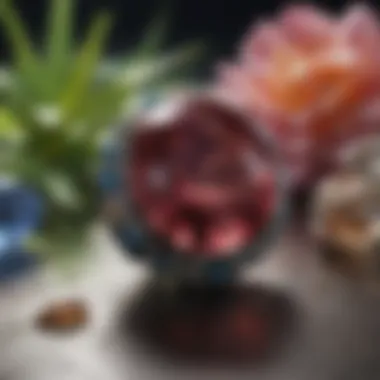
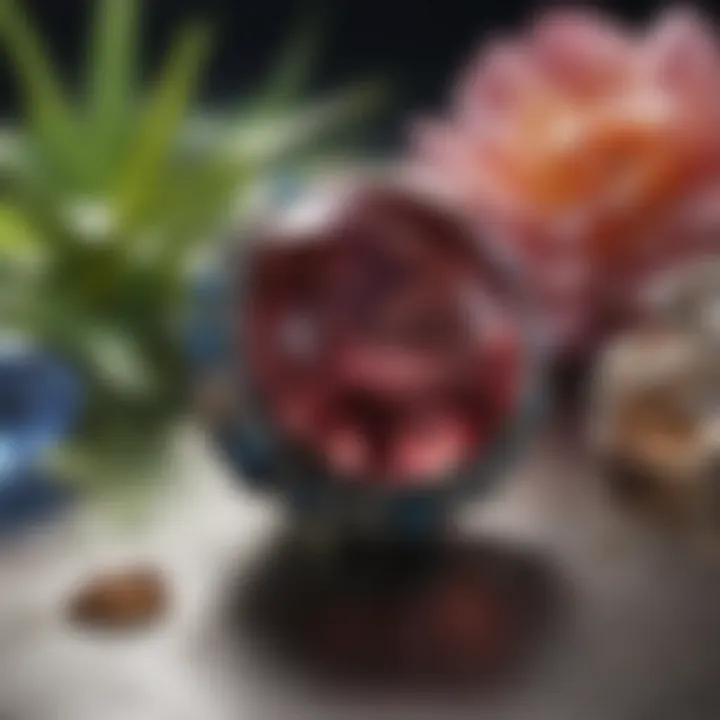
Quality Assessment Techniques
Once you've narrowed down your options, assessing the quality of the birthstones becomes paramount. A few techniques can assist in evaluating quality:
- Visual Examination: Begin with the naked eye. Look for imperfections such as scratches or cloudy spots. A clear, vibrant stone usually signifies higher quality.
- Cut: The craftsmanship of the cut impacts not only how light interacts with the gem but also how it reflects brilliance. A well-cut stone enhances its shine and overall appearance.
- Certification: If you're venturing into higher-end purchases, verifying certification from reputable gemological institutions is crucial. Certificates provide assurance regarding authenticity and quality.
- Price Bracket: Keep in mind that rarity often drives price. Rare stones may cost significantly more. However, that doesn't always equal value. Sometimes, affordable stones hold just as much meaning.
Utilizing these techniques will better equip you to make a wise and informed purchase.
Personal Preferences and Symbolism Alignment
Lastly, aligning a birthstone with personal preferences and symbolic meanings brings a level of significance that transcends its physical form:
- Personal Style: Reflect on how the stone will complement your wardrobe or the style preferences of the person you’re gifting it to. Whether minimalist or bold, the stone should harmonize with one’s aesthetic.
- Symbolic Resonance: It’s pivotal that you feel a connection to the symbolism behind the stone. For example, if a specific stone represents courage and that resonates with your journey, it adds layers of meaning.
- Stories Behind the Stone: Engage with the folklore or history surrounding a particular birthstone. These stories can infuse the purchase with a narrative, making it more than just an object but a piece of your life’s tapestry.
Choosing the right birthstone is a fusion of logic and emotion, intertwining the practical with the profound. By considering all these aspects, you ensure that your gemstone becomes a cherished symbol rather than just a decoration.
"A birthstone should genuinely reflect who you are, a keepsake of joy, memory, and affection."
With all this in mind, you are well on your way to making a thoughtful, informed, and ultimately satisfying birthstone purchase.
Ethical Sourcing of Birthstones
When considering the purchase of birthstones, one can't overlook the critical aspect of ethical sourcing. This practice focuses on obtaining gemstones in a manner that is socially responsible, environmentally sustainable, and devoid of any human rights abuses. Understanding this topic not only enhances the value of the gemstone in your collection but also ensures that you are making a conscious choice that aligns with broader ethical standards.
Understanding Ethical Gemstone Practices
Ethical gemstone practices encompass a range of elements that ensure the sourcing, processing, and sale of gemstones do not contribute to harm. At its core, it involves transparency in the supply chain. Buyers must understand where their gemstones come from. For instance, whether they're mined in peaceful regions or areas marked by conflict plays a huge role in determining a gemstone's ethical standing. There’s a movement towards responsible mining, which prioritizes fair labor practices and minimizes environmental destruction. Emphasizing these practices ensures not just the well-being of those involved in the gemstone trade, but also protects the rich ecosystems from which these stones are derived.
The Importance of Traceability
Traceability is a fundamental aspect of ethical sourcing. It means being able to track the origins of the birthstone from the moment it was mined to when it reaches the consumer. By having this traceability, buyers can confirm that the stones weren't part of conflict financing or involved with exploitative labor conditions. For example, when purchasing a sapphire, knowing whether it’s sourced from a legitimate operation in Sri Lanka or a controversial mining project can influence your decision.
Moreover, traceable gems often come with certifications from reputable bodies, assuring buyers of their ethical procurement. The more transparency there is in the gemstone market, the greater the trust established between vendors and consumers.
"An ethically sourced gemstone is not just a purchase; it becomes a commitment to responsible consumption and awareness of our impact on the world."
Selecting Vendors and Jewelers Ethically
Finding the right vendors who prioritize ethical sourcing is paramount. Not all jewelers are created equal. When considering where to buy your birthstone, research the jeweler's policies regarding sourcing and sustainability. Look for vendors who provide detailed information about their gems' origins, the mining conditions, and how they support local communities.
- Questions to ask when selecting a vendor:
- What are the sources of your gemstones?
- Do you have any certifications or affiliations with ethical sourcing organizations?
- How do you ensure fair labor practices in your supply chain?
By taking the time to ask these questions, consumers can make informed choices, ensuring that their precious birthstones align with their values. Supporting ethical vendors not only upholds standards but also promotes a market where responsible practices flourish.
Displaying and Caring for Birthstones
When it comes to birthstones, they are not just pretty to look at; they often hold meaning and significance for the person wearing or gifting them. The way you display and care for your birthstones can affect not only their appearance but also their value and longevity. Proper care and consideration make a world of difference in preserving these gems for years to come.
Jewelry Settings for Birthstones
The jewelry setting plays a crucial role in showcasing a birthstone's beauty. Selecting the right type of setting can enhance the stone's brilliance and suitability for the wearer’s lifestyle. There are several common settings:
- Prong Setting: This is where metal prongs hold the gem in place. It allows maximum light to enter the stone, highlighting its sparkle.
- Bezel Setting: A metal rim encircles the stone, providing a secure hold while offering a sleek look. This setting is ideal for everyday wear as it protects the edges of the gemstone.
- Channel Setting: Multiple stones are set in a row within a channel. This is often used in rings for a dazzling effect while maintaining a low profile.
When choosing a setting, consider the recipient’s style and how often they will wear the jewelry. For instance, someone with an active lifestyle might benefit from a more secure setting like a bezel, to prevent the stone from coming loose.
Maintenance and Care Tips
Caring for your birthstones should not be a chore; rather, it can be a delightful part of owning them. Regular maintenance ensures their longevity and brilliance. Here are a few tips:
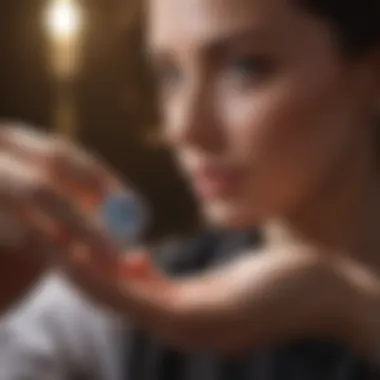

- Regular Cleaning: Use a soft cloth to wipe your gemstones after wearing them. For deeper cleaning, a mixture of warm water and mild soap can be effective. Just remember to avoid harsh chemicals that may damage the stone.
- Check Settings: Periodically, examine the settings for any signs of wear or damage. A loose prong or scratch on metal can be an invitation for trouble if not addressed early.
- Avoid Impact: While birthstones are sturdy, they're not indestructible. Removing jewelry before engaging in physical activities can protect them from chips and scratches.
"A gem’s true beauty often shines brightest when it is well cared for."
Storing Birthstones Safely
How you store your birthstones can drastically impact their condition. Follow these recommendations to ensure your gems remain in pristine condition:
- Keep Them Separate: If possible, store each piece of jewelry in a soft pouch or a lined jewelry box to prevent rubbing against each other, which can cause scratches.
- Avoid Extreme Conditions: Keep your birthstones away from harsh temperatures and high humidity. A stable environment will reduce the risk of damage to the stone or its setting.
- Consider Security: If you possess especially valuable gemstones, it’s wise to consider a safe deposit box. This way, you're safeguarding not just the stones but the memories and sentiments they carry.
By taking these steps towards displaying and caring for your birthstones, not only will you enjoy their beauty long-term, but you will also respect the cultural and personal significance behind each gem.
For more information on gemstones, visit Wikipedia or check out discussions on Reddit.
Gifting Birthstones
Choosing to gift a birthstone is not just about giving a beautiful piece of jewelry; it is about conveying sentiment, affection, and a touch of personal significance. Birthstones, universally connected to months of the year, carry their own symbolism and meanings, providing a thoughtful layer that many other gifts may lack. This layer of meaning transforms the process of gifting into a more sincere act that can strengthen bonds between individuals. For instance, gifting a topaz to a close friend born in November can signify your desire for joy and strength in their life, making it far more meaningful than a standard store-bought item.
Considering the implications of the birthstone you're giving can be a game-changer. Whether it's an anniversary, birthday, or a celebration of personal achievement, aligning the gift with the recipient's birthstone shows intentional thought.
Meaningful Gifting Considerations
When pondering over the choice of a birthstone as a gift, there are several key considerations to keep in mind. First and foremost is the recipient's birth month. Understanding the traditional birthstone associated with that month is crucial. However, it's essential to know that variations exist across cultures and traditions, offering flexibility in your selection. For instance, someone born in July might traditionally receive a ruby, but alternative options may resonate with them more, such as the spinel or onyx, which also have July affiliations in certain contexts.
It’s also wise to consider the personal tastes of the recipient. Some might prefer glitzy gemstones like diamonds, while others might be partial to more understated stones like moonstone or amethyst. Paying attention to these nuances can enhance the emotional value of your choice. Furthermore, think about the setting or piece of jewelry that will best showcase the birthstone. A minimalist ring might appeal to someone with a modern aesthetic, while an ornate necklace might cater to the tastes of a more traditional individual.
Personalizing the Birthstone Gift
Personalization can elevate a birthstone gift from ordinary to extraordinary. One effective approach is to engrave a special message or the recipient's name on the jewelry. Such a gesture can rapidly infuse the gift with a sense of singularity. For example, a simple bracelet featuring the birthstone can be dedicated with initials or a heartfelt date engraved on the inner band, creating a uniquely intimate piece.
Additionally, you might consider pairing the birthstone with complementary stones that symbolize shared values or experiences. If the recipient shares a special moment, like a friend's wedding anniversary, you might opt for a piece that incorporates both birthstones—representing the interplay of your lives. This not only serves to enhance the visual aspect but also imbues the piece with layered significance.
Occasions for Gifting Birthstones
Gifting birthstones does not confine itself solely to birthdays; various occasions lend themselves nicely to this thoughtful gesture. Consider the following:
- Anniversaries: A romantic twist can be added to anniversary gifts by giving gemstones that reflect the partners' birth months.
- Graduation: Celebrating a milestone can be enhanced by gifting a personalized birthstone necklace that inspires the graduate.
- Holidays: Special occasions like Christmas or Valentine’s Day can be perfect for giving birthstones that hold meaning for the recipient.
- Promotion or Achievement: Recognizing professional milestones with a birthstone gift can symbolize support and encouragement for their journey.
"A gift is not just about the material object, but the thought and emotion behind it."
The End: The Lasting Value of Birthstones
As we conclude this guide on purchasing birthstones, it’s essential to reflect on their inherent value beyond mere aesthetics. Birthstones carry a profound significance, intertwining personal stories with historical narratives. They are not simply gems embedded in jewelry but symbols that connect individuals to their identity, cultural heritage, and even their aspirations.
Reflecting on Personal Connections
When you choose a birthstone, whether for yourself or as a gift, you are often making a decision rooted in personal connections. The month of one’s birth can evoke sentiments of nostalgia or celebration. Each person may have a different story that resonates with their birthstone.
For example, a mother passing down a sapphire that once belonged to a grandmother not only speaks of family legacy but also reflects personal relationships. This connection can deepen emotional ties, making the act of gifting or wearing a birthstone an intimately personal experience. Each time it’s worn, it may be a reminder of love, history, or milestones, acting as a touchstone for remembrance.
Cultural and Historical Importance
The significance of each birthstone extends into the realms of culture and history. Different civilizations have attributed various meanings and powers to these stones, often believed to confer certain virtues or protection.
- Ancient Beliefs: For instance, the ancient Egyptians revered turquoise for its protective qualities, while the Romans linked pearls to love and purity.
- Traditional Alignments: Cultures around the world, including the Chinese and the Indians, have specific zodiacal associations that align with birthstones, offering guidelines on which stones to wear or give for various benefits.
In contemporary times, this historical context gives deeper meaning to birthstones, allowing wearers to engage with their heritage in tangible ways. It fosters respect for traditions, all while breathing new life into age-old customs.
Birthstones as Timeless Gifts
When seeking a gift that transcends the ordinary, birthstones shine as timeless treasures. They offer a unique means of self-expression and sentiment, tailored to the recipient's identity and personal journey. Gifting a birthstone goes beyond just an item; it’s a gesture filled with thoughtfulness that often holds a lasting impact.
- Milestone Moments: From birthdays to anniversaries, you can find a relevant occasion to gift a birthstone, ensuring that the gesture is not only suitable but also heartfelt.
- Personalization: The ability to customize jewelry settings enhances the personal touch. Compiling initials or special dates alongside the gemstone can create a truly bespoke gift, celebrating individuality.
Birthstones illustrate how the simple act of choosing a gemstone can enrich relationships, honoring the past while celebrating the present. They hold the potential to become cherished keepsakes, passed down through generations, echoing stories of love and resilience.
"The beauty of birthstones lies not only in their dazzling appearance but in the memories and meanings they encapsulate."
In summary, birthstones are layered with significance, serving as conduits for personal expression, cultural history, and thoughtful gifting. Their lasting value is ultimately shaped by the emotions and connections they inspire, reminding us that in the world of gemstones, each piece tells a story waiting to be shared.



